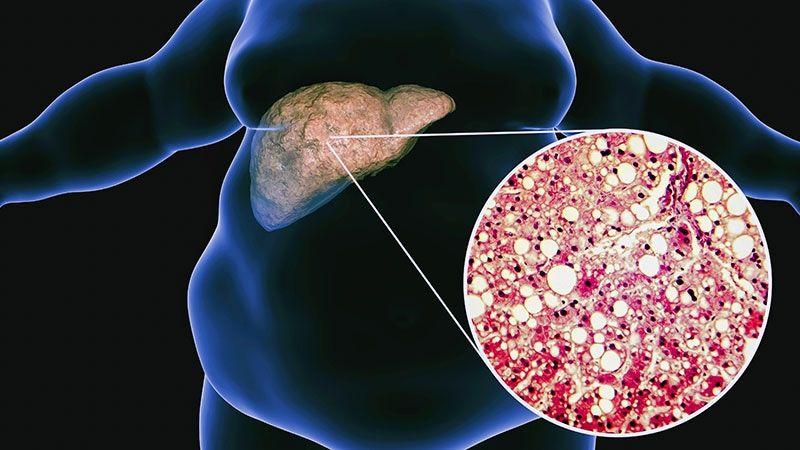New Diagnostic Tool for Minimal Hepatic Encephalopathy in Cirrhosis Patients
2 Sources
2 Sources
[1]
Stroop-CN: A rapid diagnostic tool for minimal hepatic encephalopathy
Sichuan International Medical Exchange and Promotion AssociationJul 19 2024 This study is led by Dr. Xiaolong Qi (Center of Portal Hypertension, Department of Radiology, Zhongda Hospital, Medical School, Southeast University, Nurturing Center of Jiangsu Province for State Laboratory of AI Imaging & Interventional Radiology) and Dr. Junliang Fu (Senior Department of Infectious Diseases, the Fifth Medical Center of Chinese PLA General Hospital, National Clinical Research Center for Infectious Diseases). Based on a nationwide, multicenter study, the team presented a diagnosis model named Stroop-CN. Through their model, minimal hepatic encephalopathy (MHE) could be confirmed in 10 min. "The initial aim is how could we help patients before it is too late.", says Dr. Fu. As one of the crucial comorbidities, hepatic encephalopathy occurs in 50-80% of cirrhotic patients and leads to high mortality. Therefore, MHE, the early phase of hepatic encephalopathy, characterized by neuropsychological disorders without behavioral abnormalities, plays an essential role in early intervention. While studies have demonstrated that MHE significantly reduces patient survival and can be reversed, the insidious nature of the disease and the complexity of traditional pen-and-paper experiments continue to straddle both patients and physicians. The group tried various diagnostic tools, with the Stroop test attracting their attention because of its user-friendliness. However, the team immediately realized that individual information such as age and education can lead to changes in diagnostic thresholds. So, the next question they faced was, how to use this software for rapid MHE diagnosis? In this study, they chose to synchronize the results of a large-scale collection of healthy controls to create the "Stroop-CN" model. Based on this model, information such as the age of the subjects was submitted to help determine whether the patient's cognitive level was lower than that of their healthy counterparts. On the other hand, the corresponding time, financial, and workload burdens must also be considered. Time and speed are also important. We have to take it into consideration, especially in China, where one of the fifth patients got a liver problem." Dr. Xiaolong Qi, Center of Portal Hypertension, Department of Radiology, Zhongda Hospital, Medical School, Southeast University, Nurturing Center of Jiangsu Province for State Laboratory of AI Imaging & Interventional Radiology Using the Stroop-CN model, their slowest-operating MHE patients completed the tests in less than 5 min. One of the reasons that medicine still does not pay enough attention to MHE is the complexity of the diagnosis. This paper uses a simple Stroop test to build a diagnostic model that can be applied even to subjects who can only identify colors and a few words. Further, MHE was found in nearly half of the patients with cirrhosis accompanied by reduced QOL. These evidences would apply to cirrhotic patients in China and, to some extent, provide a reference for exploring a generally applicable diagnostic and monitoring method for MHE. Sichuan International Medical Exchange and Promotion Association Journal reference: Li, X., et al. (2024). Detection of minimal hepatic encephalopathy in patients with cirrhosis based on the Stroop‐CN model (NCRCID‐CHESS 2106): a prospective multicenter study. MedComm. doi.org/10.1002/mco2.627.
[2]
Detection of minimal hepatic encephalopathy in patients with cirrhosis based on the Stroop-CN model
by Sichuan International Medical Exchange and Promotion Association A paper published in MedComm presented a Chinese EncephalApp diagnosis model (Stroop-CN) based on healthy controls distributed throughout the country and covering different demographic information. The Stroop-CN model was used for independent diagnosis of minimal hepatic encephalopathy (MHE) and found a prevalence of up to 46.7% in patients with cirrhosis and even higher in those with worse disease conditions. Meanwhile, the EQ-5D score revealed that MHE was associated with a significant decline in quality of life. This study is led by Dr. Xiaolong Qi (Center of Portal Hypertension, Department of Radiology, Zhongda Hospital, Medical School, Southeast University, Nurturing Center of Jiangsu Province for State Laboratory of AI Imaging & Interventional Radiology) and Dr. Junliang Fu (Senior Department of Infectious Diseases, the Fifth Medical Center of Chinese PLA General Hospital, National Clinical Research Center for Infectious Diseases). Based on a nationwide, multicenter study, the team presented a diagnosis model named Stroop-CN. Through their model, minimal hepatic encephalopathy (MHE) could be confirmed in 10 min. "The initial aim is how could we help patients before it is too late," says Dr. Fu. As one of the crucial comorbidities, hepatic encephalopathy occurs in 50-80% of cirrhotic patients and leads to high mortality. Therefore, MHE, the early phase of hepatic encephalopathy, characterized by neuropsychological disorders without behavioral abnormalities, plays an essential role in early intervention. While studies have demonstrated that MHE significantly reduces patient survival and can be reversed, the insidious nature of the disease and the complexity of traditional pen-and-paper experiments continue to straddle both patients and physicians. The group tried various diagnostic tools, with the Stroop test attracting their attention because of its user-friendliness. However, the team immediately realized that individual information such as age and education can lead to changes in diagnostic thresholds. So, the next question they faced was, how to use this software for rapid MHE diagnosis? In this study, they chose to synchronize the results of a large-scale collection of healthy controls to create the "Stroop-CN" model. Based on this model, information such as the age of the subjects was submitted to help determine whether the patient's cognitive level was lower than that of their healthy counterparts. On the other hand, the corresponding time, financial, and workload burdens must also be considered. "Time and speed are also important. We have to take it into consideration, especially in China, where one of the fifth patients got a liver problem," says Dr. Qi. Using the Stroop-CN model, their slowest-operating MHE patients completed the tests in less than 5 min. One of the reasons that medicine still does not pay enough attention to MHE is the complexity of the diagnosis. This paper uses a simple Stroop test to build a diagnostic model that can be applied even to subjects who can only identify colors and a few words. Further, MHE was found in nearly half of the patients with cirrhosis accompanied by reduced QOL. This evidence would apply to cirrhotic patients in China and, to some extent, provide a reference for exploring a generally applicable diagnostic and monitoring method for MHE.
Share
Share
Copy Link
Researchers develop Stroop-CN, a rapid and effective diagnostic tool for minimal hepatic encephalopathy in cirrhosis patients. This innovative test could improve early detection and management of the condition.

Breakthrough in Diagnosing Minimal Hepatic Encephalopathy
Researchers have developed a new diagnostic tool called Stroop-CN, which promises to revolutionize the detection of minimal hepatic encephalopathy (MHE) in patients with cirrhosis. This condition, often overlooked due to its subtle symptoms, can significantly impact a patient's quality of life and ability to perform daily tasks
1
.Understanding Minimal Hepatic Encephalopathy
MHE is a neuropsychiatric complication that affects up to 80% of cirrhosis patients. It is characterized by mild cognitive impairment, attention deficits, and psychomotor slowing. Despite its prevalence, MHE often goes undiagnosed due to the lack of obvious clinical signs and the complexity of current diagnostic methods
2
.The Stroop-CN Test: A Game-Changer in Diagnosis
The Stroop-CN test, developed by a team led by Dr. Jasmohan S Bajaj from Virginia Commonwealth University and McGuire VA Medical Center, is a modified version of the classic Stroop test. It incorporates culturally neutral stimuli, making it applicable across different populations. The test measures cognitive flexibility and inhibitory control, key areas affected by MHE
1
.Advantages of Stroop-CN
- Rapid administration: The test can be completed in under 5 minutes.
- High accuracy: It demonstrated 81% sensitivity and 77% specificity in detecting MHE.
- Cultural neutrality: The test uses shapes and colors instead of words, making it suitable for diverse populations.
- Correlation with other measures: Stroop-CN results aligned well with established tests like EncephalApp and PHES
2
.
Related Stories
Implications for Patient Care
Early detection of MHE is crucial for improving patient outcomes. The Stroop-CN test could enable healthcare providers to identify at-risk patients more efficiently, leading to timely interventions and better management of the condition. This, in turn, could enhance the quality of life for cirrhosis patients and potentially reduce the risk of overt hepatic encephalopathy
1
.Future Prospects
The researchers suggest that the Stroop-CN test could be integrated into routine clinical practice, particularly in settings where more complex diagnostic tools are not available. Its simplicity and effectiveness make it a promising option for widespread adoption in the management of cirrhosis patients
2
.As the medical community continues to validate and refine this new diagnostic tool, it holds the potential to significantly improve the care and outcomes for patients with cirrhosis and minimal hepatic encephalopathy.
References
Summarized by
Navi
Related Stories
Recent Highlights
1
OpenAI launches ChatGPT app store, opening doors for third-party developers to build AI-powered apps
Technology

2
Chinese AI Models Close Gap With US Systems as Open-Source Strategy Reshapes Global Tech Order
Policy and Regulation

3
OpenAI updates ChatGPT with teen safety rules as child exploitation reports surge 80-fold
Technology








